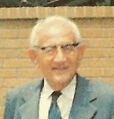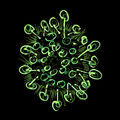Template:Selected anniversaries/September 7: Difference between revisions
No edit summary |
No edit summary |
||
| Line 1: | Line 1: | ||
<gallery> | <gallery> | ||
||1559: Robert Estienne dies ... printer and scholar. | ||1559: Robert Estienne dies ... printer and scholar. Pic. | ||
||1695: Henry Every perpetrates one of the most profitable pirate raids in history with the capture of the Grand Mughal ship Ganj-i-Sawai. In response, Emperor Aurangzeb threatens to end all English trading in India. | ||1695: Henry Every perpetrates one of the most profitable pirate raids in history with the capture of the Grand Mughal ship Ganj-i-Sawai. In response, Emperor Aurangzeb threatens to end all English trading in India. | ||
| Line 6: | Line 6: | ||
||1707: Georges-Louis Leclerc Buffon born ... mathematician, cosmologist, and author. Pic. | ||1707: Georges-Louis Leclerc Buffon born ... mathematician, cosmologist, and author. Pic. | ||
||1722: Ernst Anton Nicolai born ... physician and chemist. He will be a follower of Leibniz' concept of monadism, seeking solutions to medical problems based on the philosophic viewpoints of Gottfried Leibniz. | ||1722: Ernst Anton Nicolai born ... physician and chemist. He will be a follower of Leibniz' concept of monadism, seeking solutions to medical problems based on the philosophic viewpoints of Gottfried Leibniz. Pic search: https://www.google.com/search?q=Ernst+Anton+Nicolai | ||
||1776: According to American colonial reports, Ezra Lee makes the world's first submarine attack in the Turtle, attempting to attach a time bomb to the hull of HMS Eagle in New York Harbor (no British records of this attack exist). | ||1776: According to American colonial reports, Ezra Lee makes the world's first submarine attack in the Turtle, attempting to attach a time bomb to the hull of HMS Eagle in New York Harbor (no British records of this attack exist). | ||
| Line 14: | Line 14: | ||
||1799: Jan Ingenhousz dies ... physiologist, biologist and chemist. He is best known for discovering photosynthesis by showing that light is essential to the process by which green plants absorb carbon dioxide and release oxygen. He also discovered that plants, like animals, have cellular respiration. Pic. | ||1799: Jan Ingenhousz dies ... physiologist, biologist and chemist. He is best known for discovering photosynthesis by showing that light is essential to the process by which green plants absorb carbon dioxide and release oxygen. He also discovered that plants, like animals, have cellular respiration. Pic. | ||
||1829: August Kekulé, German chemist and academic born ... He was the principal founder of the theory of chemical structure. | ||1829: August Kekulé, German chemist and academic born ... He was the principal founder of the theory of chemical structure. Pic. | ||
||1836: August Toepler born ... physicist and academic. Pic. | ||1836: August Toepler born ... physicist and academic. Pic. | ||
||1844: Charles Romley Alder Wright born ... chemistry and physics researcher. | ||1844: Charles Romley Alder Wright born ... chemistry and physics researcher. Pic. | ||
||1884: Georges Jean Marie Valiron born ... mathematician, notable for his contributions to analysis, in particular, the asymptotic behavior of entire functions of finite order and Tauberian theorems. | ||1884: Georges Jean Marie Valiron born ... mathematician, notable for his contributions to analysis, in particular, the asymptotic behavior of entire functions of finite order and Tauberian theorems. Pic search: https://www.google.com/search?q=Georges+Jean+Marie+Valiron | ||
||1905: Karl Walter Schröter born ... mathematician and logician. Later on, after the war, he made important contributions concerning semantic consequences (German: semantische Folgerungsrelationen) and provability logic (German: syntaktische Ableitbarkeitsrelationen). He worked as a mathematical theoretician and cryptanalyst for the civilian Pers Z S, the cipher bureau of the Foreign Office (German: Auswärtiges Amt), from Spring 1941 to the end of World War II. Pic. | ||1905: Karl Walter Schröter born ... mathematician and logician. Later on, after the war, he made important contributions concerning semantic consequences (German: semantische Folgerungsrelationen) and provability logic (German: syntaktische Ableitbarkeitsrelationen). He worked as a mathematical theoretician and cryptanalyst for the civilian Pers Z S, the cipher bureau of the Foreign Office (German: Auswärtiges Amt), from Spring 1941 to the end of World War II. Pic. | ||
| Line 54: | Line 54: | ||
||1940: World War II: The German Luftwaffe begins the Blitz, bombing London and other British cities for over 50 consecutive nights | ||1940: World War II: The German Luftwaffe begins the Blitz, bombing London and other British cities for over 50 consecutive nights | ||
||1956: Otto Yulyevich Schmidt dies ... scientist, mathematician, astronomer, geophysicist, statesman, academician, Hero of the USSR (27 June 1937), and member of the Communist Party. | ||1956: Otto Yulyevich Schmidt dies ... scientist, mathematician, astronomer, geophysicist, statesman, academician, Hero of the USSR (27 June 1937), and member of the Communist Party. Pic. | ||
||1965: Jesse Douglas dies ... mathematician and academic. He will contribute a general solution of the Problem of Plateau, which asks whether a minimal surface exists for a given boundary. The problem, open since 1760 when Lagrange raised it, is part of the calculus of variations and is also known as the soap bubble problem. Pic: https://www.gf.org/fellows/all-fellows/jesse-douglas/ | ||1965: Jesse Douglas dies ... mathematician and academic. He will contribute a general solution of the Problem of Plateau, which asks whether a minimal surface exists for a given boundary. The problem, open since 1760 when Lagrange raised it, is part of the calculus of variations and is also known as the soap bubble problem. Pic: https://www.gf.org/fellows/all-fellows/jesse-douglas/ | ||
||1965: Vietnam War: In a follow-up to August's Operation Starlight, United States Marines and South Vietnamese forces initiate Operation Piranha on the Batangan Peninsula. | ||1965: Vietnam War: In a follow-up to August's Operation Starlight, United States Marines and South Vietnamese forces initiate Operation Piranha on the Batangan Peninsula. | ||
||1977: Chemist Richard Helmuth Frederick Manske dies. First synthesized DMT. Pic: https://www.findagrave.com/memorial/89667801/richard-helmuth_frederick-manske | |||
||1978: While walking across Waterloo Bridge in London, Bulgarian dissident Georgi Markov is assassinated by Bulgarian secret police agent Francesco Giullino by means of a ricin pellet fired from a specially-designed umbrella. | ||1978: While walking across Waterloo Bridge in London, Bulgarian dissident Georgi Markov is assassinated by Bulgarian secret police agent Francesco Giullino by means of a ricin pellet fired from a specially-designed umbrella. | ||
||1983: Boris Caesar Wilhelm Hagelin dies ... businessman and inventor of encryption machines. | ||1983: Boris Caesar Wilhelm Hagelin dies ... businessman and inventor of encryption machines. Pic. | ||
File:George_Pólya_circa_1973.jpg|link=George Pólya (nonfiction)|1985: Mathematician [[George Pólya (nonfiction)|George Pólya]] dies. He made fundamental contributions to combinatorics, number theory, numerical analysis and probability theory. | File:George_Pólya_circa_1973.jpg|link=George Pólya (nonfiction)|1985: Mathematician [[George Pólya (nonfiction)|George Pólya]] dies. He made fundamental contributions to combinatorics, number theory, numerical analysis and probability theory. | ||
Revision as of 12:37, 11 January 2019
1914: Physicist and philosopher James Van Allen born. The Van Allen radiation belts will be named after him, following their discovery by his Geiger–Müller tube instruments aboard satellites in 1958.
1926: Steganographic analysis of The Safe-Cracker reveals two terabytes of encrypted data.
1927: The first fully electronic television system is achieved by inventor Philo Farnsworth.
1928: Mathematician and crime-fighter Abraham Fraenkel publishes new class of Gnomon algorithm functions based on axiomatic set theory, which he uses to detect and counteract crimes against mathematical constants.
1930: Mathematician Kurt Godel announced his famous Incompleteness Theorem -- that there are true but unprovable statements in arithmetic -- in a discussion on the foundations of mathematics organized by the Vienna Circle.
1985: Mathematician George Pólya dies. He made fundamental contributions to combinatorics, number theory, numerical analysis and probability theory.
2017: Signed first edition of Niles Cartouchian and Egon Rhodomunde Confront Gnotilus sells for two million dollars.
2018: Green Tangle 2 voted Picture of the Day by the citizens of New Minneapolis, Canada.







